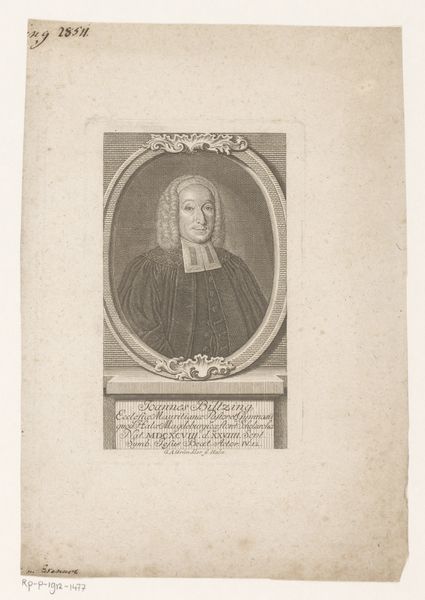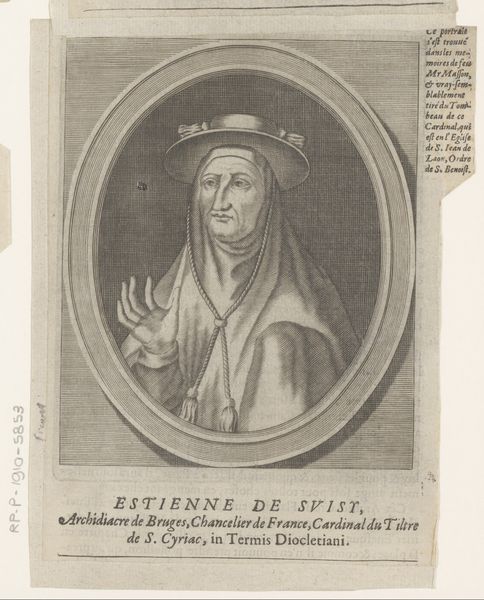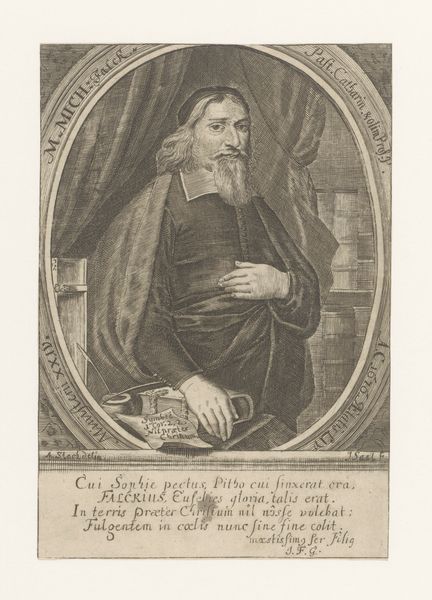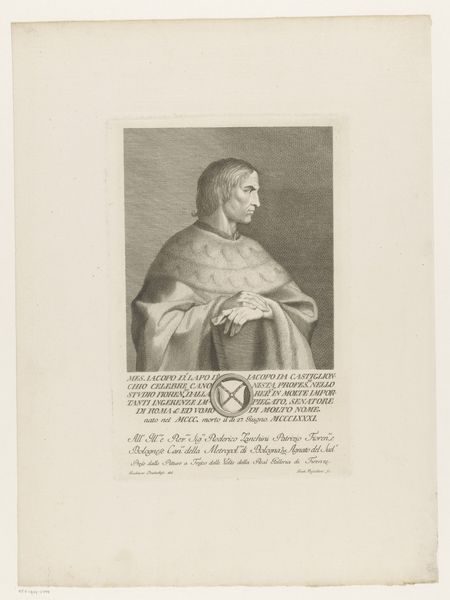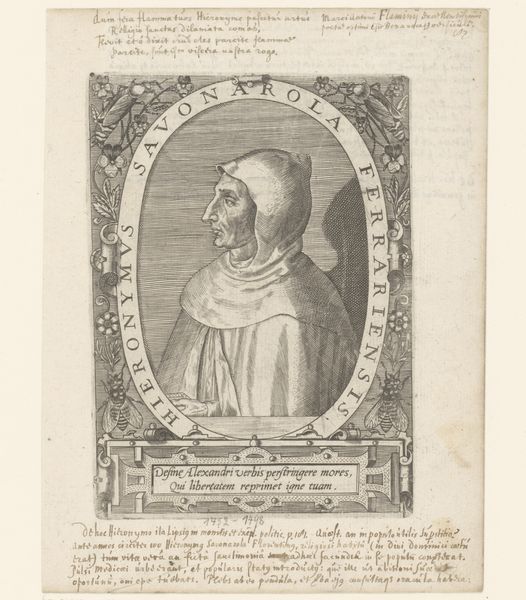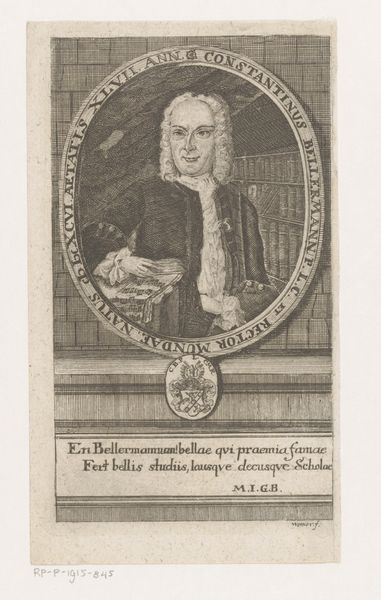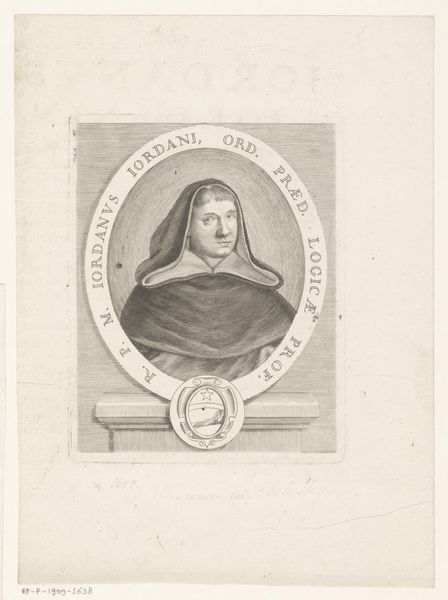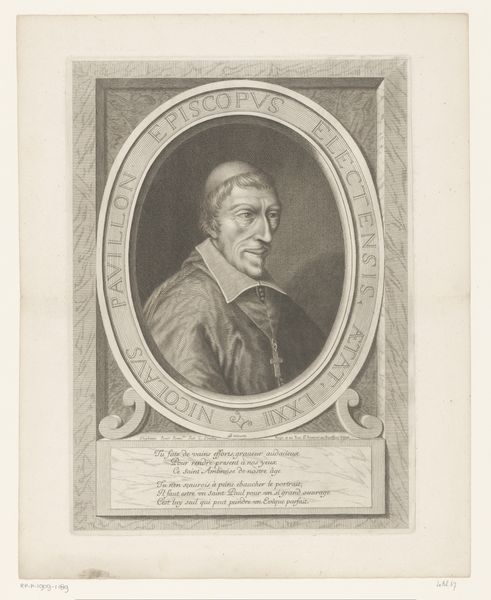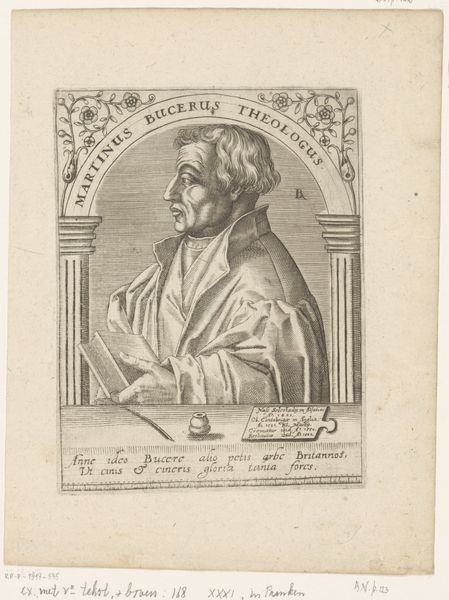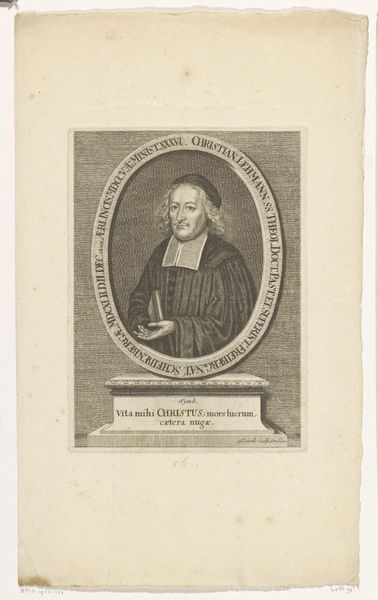
print, engraving
#
portrait
#
baroque
# print
#
old engraving style
#
history-painting
#
engraving
Dimensions: height 179 mm, width 141 mm
Copyright: Rijks Museum: Open Domain
Editor: This portrait conveys such gravity, even melancholy. The fine lines and subtle shading communicate a somber mood. Curator: Precisely. What we see here is an engraving, a print dating back to 1660. The artist, Etienne Picart, captured the likeness of Bertrand Augier de la Tour. Notice the oval frame within the rectangular sheet—it structures the composition elegantly, doesn't it? Editor: It's an interesting choice of medium for someone of such high status, a cardinal. Was engraving a more accessible format for portraiture at the time? What about the work of his hands; the manual skill etched onto the plate is striking. Curator: The sharp, clean lines produced via the engraver’s burin contrast vividly with softer artistic mediums like painting. Look at the details etched into his garment—it indicates refinement, but the stark quality reminds us of mortality; of permanence and inevitable decay all at once. Editor: I find myself drawn to the lettering beneath the portrait; this inscription emphasizes his titles and hierarchy as “Archbishop” and “Cardinal”. Yet, isn't the whole engraving also highlighting a socio-economic hierarchy? Whose hands are truly represented? The person depicted? Or the skilled artisan reproducing the image? Curator: Interesting point. Beyond simple representation, the artistic hand and the subject converge into one significant figure, bound by material and social interactions; after all, one could not exist without the other. Picart's skill allowed Augier de la Tour to circulate his likeness widely—achieving, in a way, a form of visual immortality. Editor: An affordable likeness, but perhaps it also speaks to different audiences of wealth— commissioning and printing are two distinctly classed practices of art creation. This gives us more layers to think about in understanding class, and art in society. Curator: Indeed. This particular portrait prompts consideration not only about artistry, but it illuminates the nature of status, authority, and, perhaps inevitably, death, in the 17th Century. Editor: This piece reminds us that portraiture through print isn't simply about immortalizing an individual, it captures wider cultural forces as well.
Comments
No comments
Be the first to comment and join the conversation on the ultimate creative platform.
